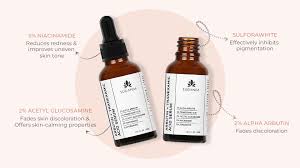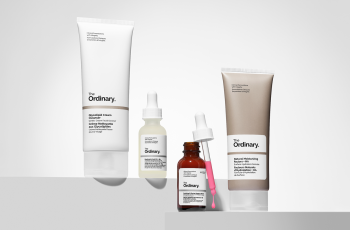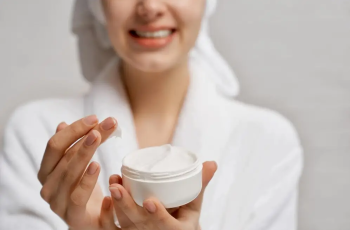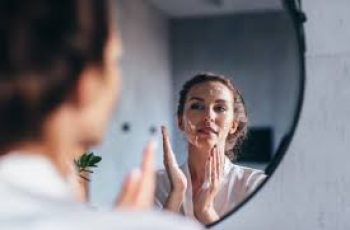
.webp)
.webp)
.webp)
Can You Use Retinol and Alpha Arbutin Together? The Skincare Truth
.webp)
.webp)
When it comes to combining powerful skincare ingredients, things can get a little confusing—especially with actives like retinol and alpha arbutin.
.webp)
.webp)
.webp)
Each has its own impressive list of benefits, but can they safely be used together? If you’re unsure how to layer them in your skincare routine, you’re in the right place.
.webp)
.webp)
In today’s post, we’ll explore:
.webp)
.webp)
.webp)
What retinol and alpha arbutin actually do
.webp)
.webp)
Whether they can be used together
.webp)
.webp)
.webp)
How to layer them correctly
.webp)
.webp)
What to avoid when using these ingredients
.webp)
.webp)
.webp)
Let’s dive in and help you get the most from your routine—with all the glow and none of the guesswork.
.webp)
.webp)
What Is Retinol and What Does It Do?
.webp)
.webp)
.webp)
Retinol is a derivative of vitamin A and a gold-standard ingredient in anti-aging and acne treatments.
.webp)
.webp)
It works by increasing cell turnover, which means it helps your skin shed dead cells faster and bring fresh, healthy ones to the surface.
.webp)
.webp)
.webp)
Here’s what regular use of retinol can help with:
.webp)
.webp)
Minimizing fine lines and wrinkles, Clearing breakouts and clogged pores, Improving skin texture and tone, Fading dark spots and post-acne marks, Boosting collagen and skin firmness
.webp)
.webp)
.webp)
Retinol works best at night since sunlight breaks it down, reducing its effectiveness.
.webp)
.webp)
However, it’s also known to cause dryness or irritation, especially when first introduced. That’s why it’s important to pair it with the right ingredients.
.webp)
.webp)
.webp)
What Is Alpha Arbutin and What Are Its Benefits?
.webp)
.webp)
Alpha arbutin is a gentle skin-brightening ingredient derived from the bearberry plant. It works by inhibiting tyrosinase, the enzyme responsible for melanin production in the skin.
.webp)
.webp)
.webp)
In short, it helps reduce unwanted pigmentation and brightens uneven tone—without harsh effects.
.webp)
.webp)
Here’s what alpha arbutin can help with:
.webp)
.webp)
.webp)
Fading dark spots and sun damage, Reducing acne scars, Brightening dull skin, Evening out skin tone, Preventing new pigmentation from forming
.webp)
.webp)
Unlike some other brightening ingredients like hydroquinone, alpha arbutin is gentle and well-tolerated by most skin types, including sensitive skin.
.webp)
.webp)
.webp)
Can You Use Retinol and Alpha Arbutin Together?
.webp)
.webp)
Yes, you absolutely can use retinol and alpha arbutin together—and in fact, they make a great pairing.
.webp)
.webp)
.webp)
Here’s why:
.webp)
.webp)
They work in different ways: retinol increases skin turnover and alpha arbutin reduces melanin production.
.webp)
.webp)
.webp)
Alpha arbutin is non-irritating and helps counter the harsh effects of retinol.
.webp)
.webp)
Together, they treat both existing pigmentation and prevent new discoloration.
.webp)
.webp)
.webp)
They can be safely layered, as long as you follow a few simple rules.
.webp)
.webp)
If you’ve ever struggled with post-acne marks, sunspots, or uneven skin tone, this combination can seriously upgrade your skincare results.
.webp)
.webp)
.webp)
How to Use Retinol and Alpha Arbutin in the Same Routine
.webp)
.webp)
To get the best results (and avoid irritation), follow these steps:
.webp)
.webp)
.webp)
Step 1: Cleanse Your Skin
.webp)
.webp)
Use a gentle cleanser to remove any makeup, dirt, or excess oil. Avoid cleansers with strong acids or exfoliants right before using active ingredients.
.webp)
.webp)
.webp)
Step 2: Apply Alpha Arbutin
.webp)
.webp)
Apply a few drops of alpha arbutin serum to clean, dry skin. Since it’s water-based and lightweight, it should go first. Let it absorb for 1–2 minutes.
.webp)
.webp)
.webp)
Step 3: Apply Retinol
.webp)
.webp)
Once alpha arbutin is fully absorbed, apply your retinol serum or cream. If you’re new to retinol, start with a lower strength 2–3 nights per week.
.webp)
.webp)
.webp)
Step 4: Follow With Moisturizer
.webp)
Seal in both actives with a nourishing, hydrating moisturizer. Look for formulas with ceramides, peptides, or hyaluronic acid to keep the skin barrier strong.
Best Time to Use Them
Retinol is light-sensitive and best used at night. Alpha arbutin can be used both morning and night, making it a flexible addition to your routine.
Here’s how your PM routine might look:
Cleanser, Alpha arbutin, Retinol, Moisturizer
Can I Use Niacinamide With Retinol and Alpha Arbutin?
Yes, and it’s actually a fantastic trio.
Niacinamide works as a soothing, hydrating, and barrier-supporting ingredient. It complements both retinol and alpha arbutin.
Here’s how each contributes:
Niacinamide: Hydrates, calms redness, and strengthens barrier
Alpha Arbutin: Brightens and fades discoloration
Retinol: Smooths fine lines, boosts collagen, renews skin
You can apply niacinamide in the morning and evening to support your skin while the more active ingredients do their job at night.
What Should You Avoid Mixing With Retinol?
While alpha arbutin is safe, there are some ingredients you should avoid layering directly with retinol:
Vitamin C (L-ascorbic acid) – may cause irritation due to low pH
Benzoyl peroxide – deactivates retinol and increases dryness
AHA/BHA acids (like glycolic or salicylic acid) – can over-exfoliate skin
Instead of cutting these out completely, alternate usage or apply them at different times of the day.
Example:
AM: Vitamin C, niacinamide, alpha arbutin, SPF
PM: Alpha arbutin, retinol, moisturizer
This way you still benefit from each ingredient without risking irritation.
Does Alpha Arbutin Help With Hyperpigmentation?
Absolutely. Alpha arbutin is one of the most effective brightening agents available over the counter.
It targets multiple types of pigmentation, including:
Post-acne marks, Sun spots, Melasma, Uneven tone, Age spots
It works by slowing down melanin production, which gives it an edge over many other brightening ingredients.
Even better? Alpha arbutin doesn’t make your skin more sun-sensitive, unlike many acids or retinol. It’s safe for year-round use—though you should still wear SPF daily.
Is Alpha Arbutin Safe for Daily Use?
Yes! Alpha arbutin is gentle enough to be used twice daily, even by those with sensitive skin.
You can apply it:
In the morning (under vitamin C or niacinamide)
In the evening (before or with retinol)
Consistency is key—daily use is what helps fade pigmentation over time. Results are often seen after 4–8 weeks of regular use.
Tips for Using Retinol and Alpha Arbutin Together
Here are a few final tips to keep in mind:
Always patch test new products for 24 hours before applying to your full face.
Start slow with retinol—use it 2–3 times per week if you’re new.
Hydration is your friend. Use moisturizers with hyaluronic acid or glycerin.
Apply a broad-spectrum SPF 30+ every morning to protect your skin.
If you experience peeling or irritation, cut back on frequency—not both products.
Final Verdict: Can You Use Retinol and Alpha Arbutin Together?
Yes—retinol and alpha arbutin can safely and effectively be used together, and doing so can give you brighter, clearer, and more even-toned skin.
Retinol renews your skin from within, while alpha arbutin fades spots and prevents new ones from forming.
Together, they tackle signs of aging, hyperpigmentation, and texture for a more youthful and radiant complexion.
Just remember to introduce products gradually, stay consistent, and always wear your SPF.
Got more skincare questions? Come find us on Instagram and send a DM—we love helping you build the best routine for your skin goals!



